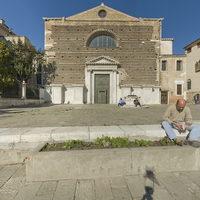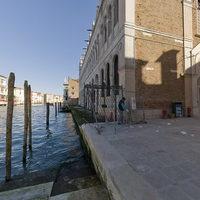Overview
The Fondaco dei Turchi, in its current state, was completely rebuilt in the mid-19th century based on the ancient model. The materials were re-obtained from the original building and the integrity of the design and facade have remained intact. The original palace was built in the early 13th century for Giuseppe Palmieri; it is typical for a Veneto-Byzantine style home. There are spacious arcades on the ground floor, two towers and crenellation, and the facade faced in marble. In 1381 it was purchased by the Republic for the Marquis of Ferrara, Niccolo V. The interior was considered so opulant that it was often "borrowed" to house visiting dignitaries. In 1453 the Byzantine Emperor Giovanni Paleologo stayed here, and in 1562 Alphonso d'Este with his consort Eleonora. It then passed to several noble Venetian families until acquired by the Pesaro family (which is ironic, since the original owner Giuseppe Palmieri was an exile from Pesaro). In 1621 the Republic rented it to house Turkish merchants and their goods. This continued until 1838; in 1858 it was purchased by the Town Council, restored and used for the Correr Museum. Since the 20th century it has housed the Natural History Museum. The facade and exterior arcades and courtyard is intact, but many of the lower ground floors have been broken up to try to create a more modern presentation for the museum collection. The upper floors are not touched. They house two collections of native African artifacts and the big game trophies (taxidermied) of Venetian explorers. There arer also medical specimens, taxonomy, paleontology and archeological collections.
- Lorenzetti, Venice and Its Lagoon: Historical-Artistic Guide (Rome: Istituto Poligrafico dello Stato, 1961) as translated and with supplementary content by Taryn Marie Zarrillo, 2012/13


